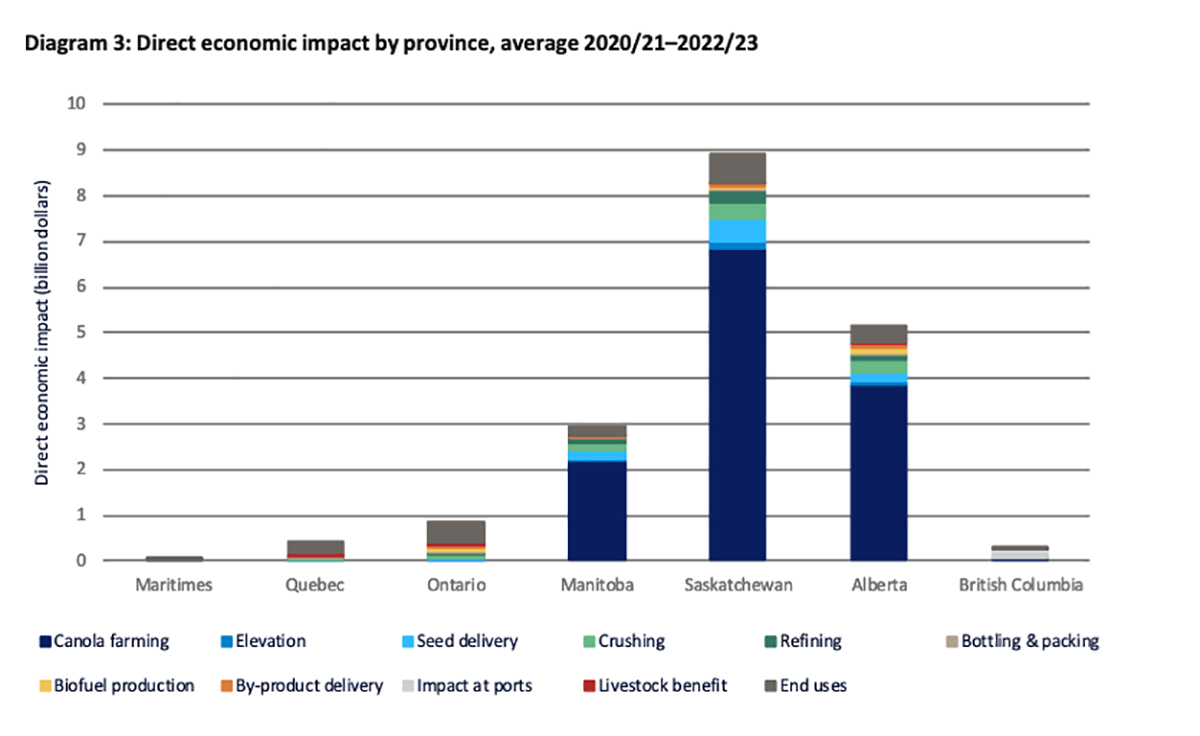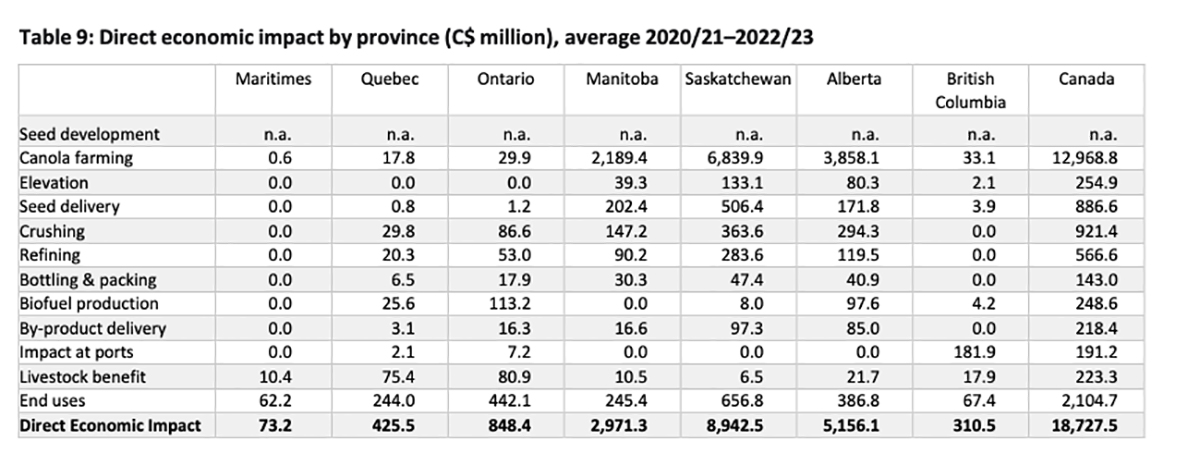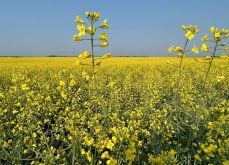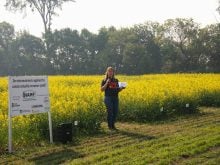Canola continues to contribute to Canada’s economy in a big way, according to a new study.
It generated an estimated $22.54 billion in direct economic activity in 2022-23, which is slightly more than double the impact from a decade earlier.
Other stories in the Canola Yearbook 2024:
- A new era for crop genetics
- Shrinking production estimate supports canola bids
- Canola goals must be reassessed to match market reality
- Canola growing season in review
- Bill C-234 ping pongs between Senate and House
- Canola News Briefs
- Verticillium, blackleg and gophers
- Sustainability incentive for canola growers
- What made canola so strong?
- Science news briefs
- Tiny allies may help withstand drought
- Canola and climate change in Western Canada
- Production news briefs
- The future of gene editing in canola
- Canola views – photo essay
The sector supported more than 60,000 jobs and generated $5.9 billion in direct wages across Canada that year, an 89 per cent increase from 2012-13 levels.
Read Also

Fertilizer method’s link to emissions studied
A researcher says others studying greenhouse gas emissions aren’t considering how the loss of nitrogen into the atmosphere correlates with fertilizer application or if there is an impact to yield.
The report was commissioned by the Canola Council of Canada and developed by GlobalData Plc.
“There has been a significant increase in the economic benefits from canola, impacting the Canadian economy on a large scale,” council president Chris Davison said in a news release.
The growth in the industry’s impact has been driven by higher prices and production volumes, as well as value-added activities in the sector.
Canola farming accounted for $15.26 billion of the economic activity. There were approximately 33,000 canola farmers in Canada in 2022-23.

Keith Fournier, chair of the Saskatchewan Canola Development Commission, said the crop plays a huge role on his grain farm in northwestern Saskatchewan.
“Canola does well in this part of the province,” he said.
“We get good yields, and the prices are good. For most years it’s the most profitable crop I grow.”
Fournier said it is an expensive crop to put in the ground, but the return on investment is second to none.
It is subject to price volatility like every other crop. The one advantage it has is rock-solid end user demand. And that demand is diversified, with the food industry accounting for a large portion of sales and the biofuel sector coming on strong.
“We do have that steady demand, so that takes some of the fluctuations out of it for us,” he said. That doesn’t mean the crop is impervious to market disruptions.
“Sometimes we get depending heavily on China, and that market can throw us a curveball,” said Fournier.
China implemented export restrictions against Richardson International and Viterra in March 2019 that stayed in place for more than three years.
And in September of this year the country announced it was initiating an anti-dumping investigation into canola seed imports from Canada, which could eventually result in punitive tariffs against the commodity.
But for the most part demand has been steady, making it a reliable crop for farmers to grow.
Fournier said canola’s economic impact is felt far beyond the farmgate. The most glaring example is all the new crush plants and expansions occurring in places like Regina and Yorkton, Sask.
The crushing and refining sector generated $2.94 billion in direct economic activity in 2022-23, up from $560 million a decade earlier.
“This has been a period of major investment by the industry,” said Davison.
“With expansion underway in canola processing here in Canada, we are seeing a sizeable investment of capital and an important opportunity to support growth in value-added production in the years ahead.”
Fournier said one of the main reasons the council sponsored the report is to showcase how the industry bridges the rural/urban divide by providing employment in places such as Regina and at ports such as Vancouver.
“It spills over into those urban areas,” he said.
“The benefits are there for those people, also.”
The other main reason the council commissioned the report is to give the sector more clout when visiting politicians and bureaucrats in Ottawa.
“If we’re lobbying for anything, it helps carry the weight there,” said Fournier.
They can show policymakers how the crop’s economic influence extends to elevation, seed delivery, bottling and packaging, biofuel production, byproduct delivery, ports, the livestock sector and end uses.
It can also be used when lobbying the provinces.
Saskatchewan has seen the biggest total direct economic impact, which averaged $8.94 billion during the 2020-21 to 2022-23 period.
It was followed by Alberta at $5.16 billion and Manitoba at $2.97 billion. Those are the big ones, but most provinces have experienced at least some economic benefit.
“Canola’s impact is felt across Canada and around the world and it remains a source of immense pride for our industry,” said Davison.

Fournier said growing canola has its good and bad parts, like any other crop. Farmers were excited about crop establishment early this year, but canola is a cool season crop, and yields suffered during the July heat wave.
“There were some disappointments at harvest time,” he said.
“We didn’t hit the ball out of the park like we thought we were going to.”
He believes canola acres are capped in the northern one-third of the Prairie growing region.
“If we push it anymore, disease is going to come back and we’re probably going to end up starting to take a yield hit on it,” he said.
However, he believes there is room for acreage expansion in southwestern and south central Saskatchewan if breeders can produce varieties that can withstand the heat in those parts of the province.
He doesn’t see any short-term threats to canola’s dominance as a reliable contributor to farm cash receipts and incomes.
Long-term, it depends on whether the crop can stay ahead of diseases such as clubroot, blackleg and verticillium stripe, said Fournier.
Contact sean.pratt@producer.com


















